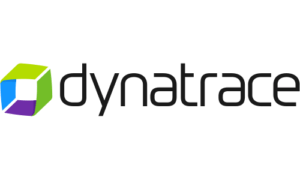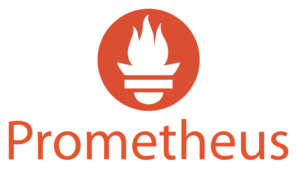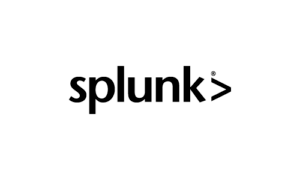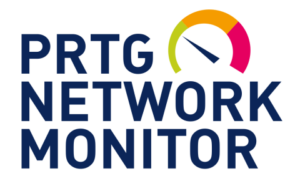Maintaining a well-functioning IT infrastructure is vital to any business’s success. Infrastructure monitoring tools are essential for keeping tabs on all the components of your system, ensuring uptime, performance, and security. As 2024 unfolds, businesses are seeking the best tools that can handle their growing demands. In this post, we will explore the top 15 infrastructure monitoring tools in 2024, but first, let’s break down the importance of infrastructure monitoring.
What is Infrastructure Monitoring and Why is it Crucial?
Infrastructure monitoring is the process of tracking and managing the health and performance of all IT components, such as servers, networks, databases, and applications. By constantly observing the performance of these elements, businesses can identify potential issues before they escalate into major problems.
Infrastructure monitoring ensures that critical systems remain operational, performance issues are swiftly resolved, and outages are minimized. Without monitoring, businesses risk downtime, performance degradation, and security vulnerabilities which can lead to financial loss and damage to their reputation.
Benefits of Infrastructure Monitoring
Investing in infrastructure monitoring tools brings many advantages including:
- Proactive Issue Detection: Monitoring helps identify problems before they impact end users which allows IT teams to resolve issues proactively.
- Increased Uptime: By detecting anomalies and alerting IT staff to potential problems, monitoring tools ensure that infrastructure operates at optimal levels to reduce the chances of unexpected downtime.
- Cost Efficiency: Early identification of issues means businesses can avoid costly outages and reduce the need for emergency fixes which saves both time and money.
- Better Resource Utilization: Infrastructure monitoring provides insights into resource usage, helping organizations optimize their hardware and software investments.
- Security Enhancement: Monitoring tools can detect unusual activity such as unauthorized access or data breaches to help maintain a secure environment.
Essential Features for Infrastructure Monitoring Tools
When choosing infrastructure monitoring tools, businesses should look for the following key features:
- Real-time Monitoring: The ability to track the status of infrastructure components in real time is crucial for immediate detection of issues. You want to know what’s happening right now, not five minutes ago!
- Alerts and Notifications: Get timely alerts that notify IT staff of performance or security issues are essential for quick response and resolution.
- Custom Dashboards and Reports: The tool should offer customizable dashboards to visualize performance metrics and generate reports tailored to business needs.
- Scalability: As infrastructure grows, the monitoring tool must be able to scale accordingly to handle additional devices and applications.
- Integrations: Seamless integration with other IT management systems (like DevOps, cloud platforms, and helpdesk tools) is critical for a unified infrastructure management approach.
- Historical Data Analysis: The ability to analyze historical data helps identify trends and allows teams to anticipate future performance bottlenecks.
Best 15 Infrastructure Monitoring Tools of 2024
1) Dotcom-Monitor
Dotcom-Monitor is a leading solution for infrastructure monitoring designed with a user-friendly approach that simplifies your monitoring tasks. It offers a comprehensive suite of tools to help identify performance bottlenecks and ensure your IT infrastructure’s availability and performance. Dotcom-Monitor provides synthetic monitoring, web performance management, network performance checks, multi-location monitoring, and full API monitoring.
Beyond these features, Dotcom-Monitor extends its capabilities to cover crucial services like VoIP services monitoring, FTP server monitoring, DNS monitoring, as well as ICMP Ping monitoring, UDP monitoring, and TCP Port/Telnet checks. This ensures that even specialized components of your infrastructure are closely monitored for performance and uptime. These expansive capabilities make Dotcom-Monitor a go-to solution for proactive IT infrastructure management, allowing organizations to achieve and maintain peak performance.
Key Benefits:
- Synthetic monitoring: Simulates user interactions to maintain a top-notch user experience.
- Web performance management: Helps optimize website load times for better engagement.
- Network performance checks: Keeps tabs on network paths to prevent disruptions.
- Multi-location checks: Monitors your infrastructure from multiple global locations.
- API monitoring: Ensures seamless communication between systems.
2) Nagios
Nagios is a well-known open-source tool that helps you monitor your IT infrastructure’s availability and performance. From servers to network devices and applications, it covers it all. Nagios sends real-time alerts when something’s wrong, allowing you to fix issues before they become a problem. Using a plugin-based approach, it gathers data on system resources, network services, and even environmental conditions to give you full control over what you monitor.
Key Benefits:
- Real-time monitoring and alerting: Stay ahead of issues before they impact your business.
- Plugin-based architecture: Easily customize what you monitor, from CPU usage to network services.
- Flexible notifications: Get alerts via email or SMS when something’s wrong.
3) Middleware
Middleware is a compelling choice, particularly for organizations seeking to simplify their monitoring efforts without sacrificing depth and detail. When evaluating infrastructure monitoring solutions, it’s crucial to opt for a tool that delivers comprehensive monitoring and full-stack observability across your IT ecosystem and Middleware does this for any business.
Middleware offers real-time insights into IT infrastructure, applications, and services, facilitating the identification and resolution of performance bottlenecks before they affect end-users. Unlike traditional tools that often require intricate setup and substantial maintenance, Middleware is designed for rapid deployment, ease of use, and seamless integration into existing workflows.
Middleware offers a more economical alternative to commercial options like Datadog and New Relic while providing essential features for effective infrastructure monitoring and observability at a reduced cost. Whether it’s a small startup or large enterprise, Middleware ensures optimal performance across the entire tech stack, delivering the necessary visibility without breaking the bank.
Key Benefits:
- Real-time infrastructure and application insights: Identify and fix performance bottlenecks quickly.
- Easy deployment: Get started fast with minimal setup and maintenance.
- Seamless integration: Fits right into your existing workflows.
4) Zabbix
Zabbix is an open-source monitoring tool for tracking IT infrastructure performance and availability. It monitors servers, networks, applications, and services, collecting CPU, memory, network, and application parameters data. With customizable thresholds and alerts, it helps identify and address issues promptly, minimizing downtime and ensuring smooth operations.
Zabbix also offers visualization features like dashboards, graphs, and maps for intuitive data analysis. Being open-source, it benefits from a dedicated community that ensures continuous improvement and keeps pace with industry standards and emerging technologies.
Zabbix is a versatile monitoring solution with a vibrant community, empowering organizations to optimize their IT infrastructure.
Key Benefits:
- Open-source with a strong community
- Customizable thresholds and alerts
- Visual dashboards for easy data analysis
- Monitors a wide range of IT infrastructure
5) SolarWinds
SolarWinds is a software company known for its comprehensive IT management and monitoring solutions. Their flagship product, SolarWinds Orion, assists IT professionals in network and system management.
SolarWinds Orion offers real-time tracking of performance metrics for various devices and applications. It also supports multi-vendor devices, ensuring comprehensive visibility across servers, routers, switches, firewalls, virtual machines, storage systems, and applications. It provides robust alerting and reporting features, allowing users to configure customized alerts for timely notifications.
SolarWinds Orion stands out for its user-friendly interfaces and intuitive workflows, minimizing the learning curve of implementing and managing IT management tools.
Generally, SolarWinds offers a robust suite of IT management and monitoring solutions, with SolarWinds Orion as its flagship product.
Key Benefits:
- Real-time monitoring for network and systems
- Supports multi-vendor devices
- User-friendly interface and workflows
- Customizable alerts for timely notifications
6) Dynatrace
Dynatrace is an observability platform that offers advanced monitoring, analytics, and management capabilities for cloud-native and hybrid IT environments. It provides end-to-end visibility into applications, infrastructure, and user experiences, enabling organizations to monitor and optimize their digital performance.
Dynatrace offers advanced monitoring, analytics, and management for cloud-native and hybrid systems. It provides end-to-end visibility, AI-driven anomaly detection, automatic baselining, and multi-cloud support. It excels in correlating data, facilitating collaboration with DevOps, and leveraging AI for predictive analytics. Generally, Dynatrace ensures superior digital performance and exceptional user experiences.
Key Benefits:
- AI-driven anomaly detection and insights
- End-to-end visibility for cloud and hybrid systems
- Automatic baselining and multi-cloud support
- Great for DevOps collaboration and predictive analytics
7) Datadog
Datadog is a cloud monitoring and observability tool catering to the evolving needs of modern IT infrastructure. Its comprehensive suite of monitoring and analytics solutions enables organizations to gain deep insights into the performance and health of their systems.
A key strength of Datadog lies in its robust monitoring capabilities. It enables users to collect and visualize metrics, logs, and traces from diverse sources such as cloud platforms, servers, containers, and applications.
Its visualization features offer intuitive and customizable dashboards, allowing users to create meaningful visual representations of their data.
Furthermore, Datadog’s alerting functionality ensures real-time awareness of critical incidents and anomalies. Users can configure thresholds and triggers for specific metrics and receive alerts via various channels like email or SMS. This enables timely response and remediation, minimizing downtime and optimizing system performance.
Again, Datadog seamlessly integrates with cloud platforms like AWS, Azure, or GCP, providing a unified monitoring solution. It also offers real-time threat detection, log management, and compliance monitoring, enabling organizations to identify and mitigate potential security risks.
Leveraging Datadog’s features, organizations can gain better insights into their system’s performance, availability, and security.
Key Benefits:
- Collects and visualizes metrics, logs, and traces
- Customizable dashboards for intuitive data views
- Real-time alerting for fast incident response
- Seamless integration with AWS, Azure, and GCP
- Offers threat detection and compliance monitoring
8) Prometheus
Prometheus is an open-source monitoring and alerting tool used in cloud-native environments. SoundCloud initially developed it and later donated it to the Cloud Native Computing Foundation (CNCF). Prometheus offers a scalable, flexible, and efficient solution for monitoring IT infrastructure.
With Prometheus, organizations can easily monitor extensive clusters and distributed systems. Its flexible architecture enables metrics collection from various sources, including applications, services, and system components.
Its time-series database ensures fast query response times and efficient data retention. Prometheus also provides a powerful querying language called PromQL, enabling users to perform complex analyses, aggregations, and computations on collected metrics. This helps developers gain valuable insights into system behavior and troubleshoot performance issues.
Prometheus has an active community, ensuring continuous development and improvement. It seamlessly integrates with other cloud-native tools and frameworks, such as Kubernetes, enhancing its functionality and usability in modern application environments.
Key Benefits:
- Scalable and flexible monitoring for cloud-native setups
- Powerful query language (PromQL) for deep data analysis
- Time-series database for fast queries and data retention
- Seamless integration with Kubernetes and other cloud tools
- Active community for continuous improvements
9) New Relic
New Relic is a software analytics and monitoring platform that empowers organizations to monitor, troubleshoot, and optimize the performance of their applications, infrastructure, and customer experiences. It provides unparalleled visibility into complex software environments.
By leveraging New Relic’s powerful monitoring and analytics platform, organizations can gain deep insights into the performance of their software systems and detect anomalies before they impact the end-user experience.
New Relic offers various monitoring and analytics features, including real-time performance monitoring, application monitoring, error tracking, and synthetic testing. It enables organizations to track key metrics, visualize data in intuitive dashboards, and generate detailed reports for informed decision-making and continuous improvement.
With New Relic, businesses can stay at the forefront of digital performance, ensuring their software systems operate at their best and deliver exceptional user experiences.
Key Benefits:
- Real-time performance monitoring and error tracking
- Application and infrastructure monitoring
- Intuitive dashboards and detailed reporting
- Synthetic testing for simulating user experiences
- Focus on optimizing customer experience and software performance
10) Splunk
Splunk is a data analytics and monitoring tool that allows organizations to collect, index, and analyze large amounts of machine-generated data. It supports data ingestion from diverse sources such as servers, applications, sensors, and devices, allowing organizations to centralize and correlate their data for comprehensive analysis.
Splunk’s search and reporting functionalities enable users to quickly extract meaningful information from their data, identify trends, detect anomalies, and monitor system performance in real-time. It also offers powerful visualization options, including dashboards and charts, to comprehensively present data.
Moreover, Splunk supports creating custom applications and integrations through its robust API, fostering extensibility and enabling organizations to tailor the platform to their needs.
Overall, Splunk empowers organizations to harness the potential of their machine-generated data for better decision-making, operational efficiency, and security enhancement.
Key Benefits:
- Centralizes data from diverse sources for analysis
- Powerful search and reporting capabilities
- Real-time monitoring of system performance
- Custom dashboards and visualizations for data insights
- Supports custom applications and integrations via API
11) PRTG Network Monitor
Paessler Router Traffic Grapher (PRTG) Network Monitor is a comprehensive network monitoring and management tool developed by Paessler AG. It is designed to monitor networks, devices, and applications’ health and performance in real-time. PRTG provides a centralized platform for monitoring network infrastructure, servers, virtual machines, and other critical components.
PRTG Network Monitor offers an extensive feature set for comprehensive network monitoring and management. It monitors networks, devices, and applications, ensuring their health, performance, and availability. With network device monitoring, bandwidth monitoring, application monitoring, server monitoring, and network mapping capabilities, PRTG allows organizations to track and analyze their network infrastructure effectively.
Furthermore, PRTG has alerting and notification features, customizable sensors, reporting and analysis tools, and scalability to accommodate networks of all sizes. With its ease of use and robust features, PRTG Network Monitor allows organizations to maintain network performance, minimize downtime, and ensure the availability and reliability of critical network infrastructure and services.
Key Benefits:
- Real-time network, device, and application monitoring
- Customizable sensors for tailored insights
- Alerts and notifications for quick response
- Easy-to-use interface with network mapping
- Scalable to fit networks of all sizes
12) ManageEngine OpManager
ManageEngine OpManager is a powerful tool that helps you monitor your entire IT infrastructure. Whether it’s network devices, servers, or applications, OpManager ensures everything is performing at its peak. It also offers automation tools and configuration management to streamline troubleshooting and keep your network secure.
Key Benefits:
- Real-time monitoring of network devices, servers, and applications
- Automated device configuration and change management
- Customizable dashboards for easy access to key metrics
- Alerting to spot issues early before they impact performance
- User-friendly interface and comprehensive reports
13) AppDynamics
AppDynamics is all about giving you real-time insights into how your applications are performing. It tracks critical metrics, monitors business transactions, and helps troubleshoot issues quickly to ensure users have the best experience possible. With its end-to-end visibility, you can keep your applications running smoothly and make data-driven decisions to boost performance.
Key Benefits:
- Real-time performance monitoring for applications
- End-to-end visibility across apps and infrastructure
- Tracks user experience and business transactions
- Alerts for fast issue resolution
- Helps optimize application performance and user satisfaction
14) Sentry
Sentry is your go-to tool for catching and fixing errors in your applications. It gives developers real-time alerts and detailed error reports, making it easier to spot problems and improve performance. With Sentry, you can track down issues faster, leading to more reliable and efficient applications.
Key Benefits:
- Real-time error monitoring and crash reporting
- Integrates with essential development tools
- Helps developers quickly identify and fix issues
- Detailed error reports for better troubleshooting
- Improves software quality and performance
15) Grafana
Grafana is an open-source tool that’s perfect for visualizing data from a wide range of sources. Whether it’s infrastructure metrics or application data, Grafana makes it easy to create dynamic dashboards that help you track performance and get valuable insights. Plus, it supports creating alerts based on custom thresholds to keep you informed.
Key Benefits:
- Versatile data visualization from multiple sources
- Customizable dashboards for real-time insights
- Wide range of graph, chart, and table options
- Alerts and notifications based on user-defined thresholds
- Great for monitoring system performance and infrastructure metrics
Conclusion
In summary, infrastructure monitoring is a vital part of keeping your IT environment healthy and thriving. The tools we’ve highlighted here are designed to provide essential insights and features that will help you maintain uptime, optimize resources, and enhance business efficiency.
As we move through 2024, you should take the time to evaluate these tools though based on your unique infrastructure needs. With the right monitoring solution in place, you can proactively manage your IT environment, reduce downtime, and ensure a smooth experience for your users. In our opinion, whether you’re managing complex networks or cloud environments, Dotcom-Monitor makes it easy to stay on top of your infrastructure and ensure peak performance. It’s the perfect choice for businesses looking for a reliable, user-friendly monitoring tool that helps prevent downtime and keeps things running without a hitch!













